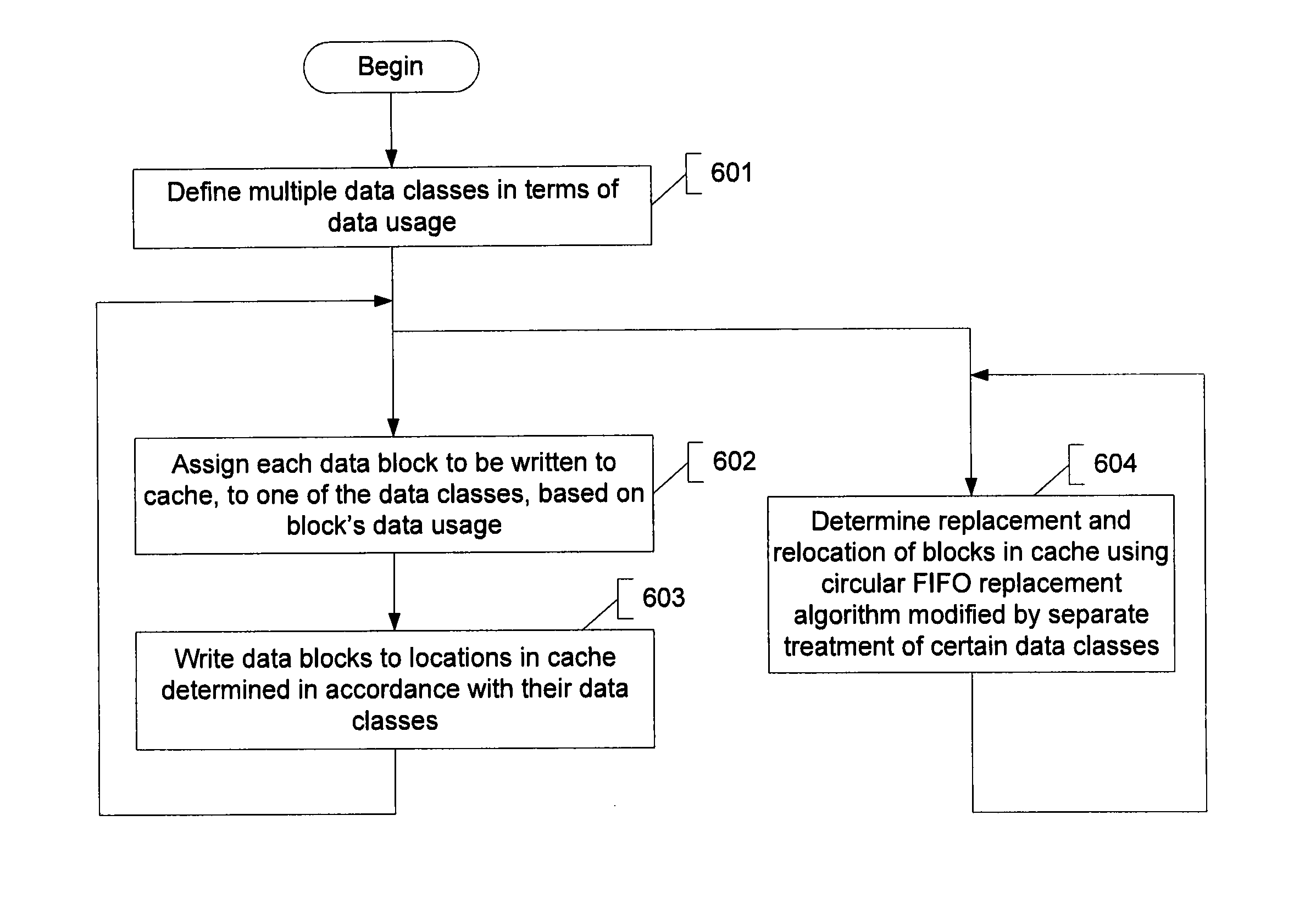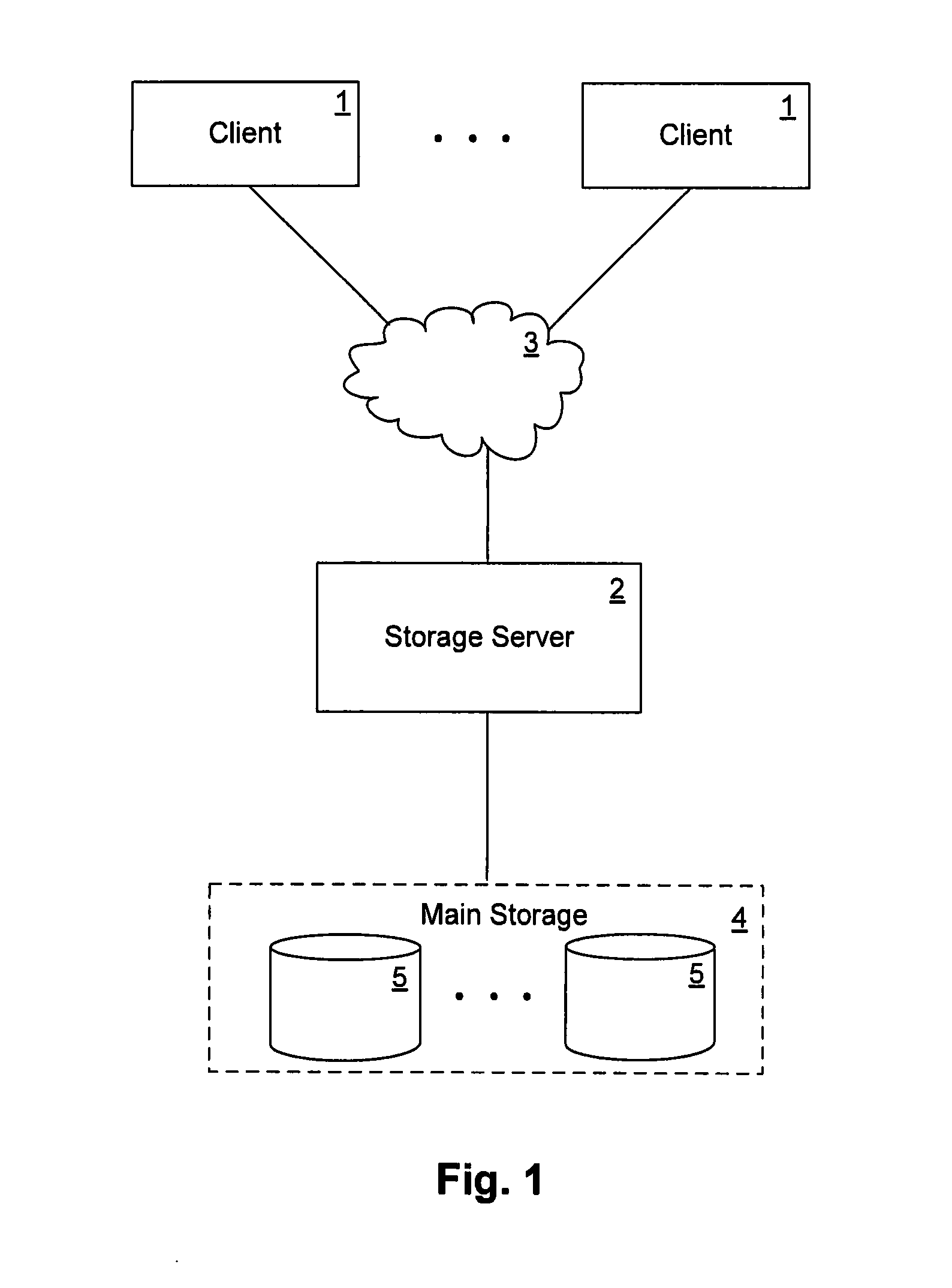Concurrent content management and wear optimization for a non-volatile solid-state cache
- Summary
- Abstract
- Description
- Claims
- Application Information
AI Technical Summary
Benefits of technology
Problems solved by technology
Method used
Image
Examples
Embodiment Construction
[0020]References in this specification to “an embodiment”, “one embodiment”, or the like, mean that the particular feature, structure or characteristic being described is included in at least one embodiment of the present invention. Occurrences of such phrases in this specification do not necessarily all refer to the same embodiment. On the other hand, different embodiments may not be mutually exclusive either.
Overview
[0021]As described further below, a network storage server can include a primary cache (e.g., buffer cache) and a solid-state secondary cache (e.g., victim cache), in addition to a main storage subsystem, where the secondary cache can be implemented as flash memory. The technique introduced here manages the content of the secondary cache to improve cache performance while at the same time, and in a complementary manner, providing for automatic wear leveling of the secondary cache. Note that while the secondary cache is described here as being implemented in flash memor...
PUM
 Login to View More
Login to View More Abstract
Description
Claims
Application Information
 Login to View More
Login to View More - R&D
- Intellectual Property
- Life Sciences
- Materials
- Tech Scout
- Unparalleled Data Quality
- Higher Quality Content
- 60% Fewer Hallucinations
Browse by: Latest US Patents, China's latest patents, Technical Efficacy Thesaurus, Application Domain, Technology Topic, Popular Technical Reports.
© 2025 PatSnap. All rights reserved.Legal|Privacy policy|Modern Slavery Act Transparency Statement|Sitemap|About US| Contact US: help@patsnap.com



